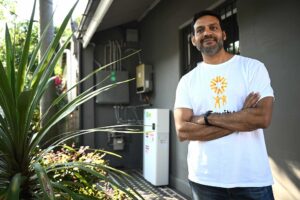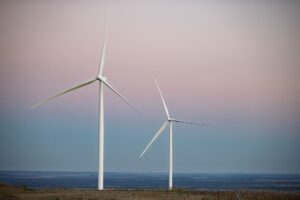A major new report has detailed the “extraordinary economic opportunity” for Australia to replace its coal and gas exports with decarbonised commodities, and reap six to eight times more than the typical revenues it earns from fossil fuels, and help other major economies to meet their own climate goals.
But renewed calls for Australia to act as a global green superpower are clashing hard against accusations of “political cowardice,” as the Albanese government continues to dodge all questions about the 2035 emissions reduction target it is supposed to set within a few months.
Australia, like other countries signed up to the Paris climate accord, has committed to submit an updated National Determined Contribution by the end of February 2025, including a new, and preferably very ambitious, interim emissions reduction target.
The adoption of 2035 NDCs was agreed to at last year’s COP28 in Dubai, in line with advice from the IPCC that limiting warming to 1.5°C means pushing global greenhouse gas emissions 60% below 2019 levels by 2035 – rather than just aiming for net zero by 2050 and hoping for the best.
This year’s COP29 climate talks, currently underway in Baku, Azderbaijan, notably kicked off with a commitment from British prime minister Keir Starmer to an interim UK emissions reduction target of at least 81 per cent on 1990 levels by 2035.
Asked point blank over the weekend whether he might follow suit, Albanese told a press conference at the APEC Summit in Peru that his government would commit to delivering its 2030 target, only – a 43% reduction on 2005 levels that was legislated back in 2022 in the wake of federal Labor’s election win.
“The 2035 target has to be handed down next year,” one journalist pushed. “Will you commit to giving Australians an idea of what you want that target to be like?”
“Well, we’re committing to our 2030 target,” the PM said. “It’s legislated. 2030 comes before 2035 and we’re very focused on delivering and we’re on track to delivering that target.”
These snippy deflections continue to suggest – but by no account confirm – that federal Labor will keep its powder dry on an interim emissions target unless and until it is re-elected in the upcoming national poll, which is currently penciled in for May, following a March federal budget.
This is disappointing from a government that was elected on a climate platform and promises of disengaging from the climate wars, but now appears cowered to do so in light of Donald Trump’s triumph and his declared goal of rolling back policies that support what he describes as a “climate hoax” and “renewables scam.”
Independent MP for North Sydney, Kylea Tink, on Monday said the PM’s confirmation that his government has no intention of releasing a 2035 target before the next election is not good enough.
“Australians deserve better from a Prime Minister who committed to doing politics differently when elected,” Tink said.
“Committing to announcing 2035 targets ‘sometime next year’ is political cowardice from Labor.
“Australian voters deserve to know if they are voting for a party in 2025 that is condemning future generations to a dangerous and less prosperous future.”
No doubt, the election result in the US has served to further erode the Albanese government’s confidence. But for a party pushing a renewable energy target of 82 per cent by 2030, and a future made in Australia underpinned by the development of a homegrown solar and battery storage supply chain, it cannot have it both ways.
So, are we in, or are we out?
Take the latest report from climate think tank the Superpower Institute, which details the potential for Australia to make a motza exporting decarbonied commodities, to meet higher-than-expected demand from economies like China, Japan, South Korea, India and Germany.
The report, unveiled at Parliament House on Monday, suggests the opportunity could net Australia as much as $693 billion in potential export revenue, or $987 billion at forecast 2060 levels of output – six to eight times more than fossil fuel exports.
“Australia is one of several countries which can produce economically much more than their own requirements of goods with net zero emissions,” economist, climate leader and Superpower Institute director Ross Garnuat says in the introduction to the report.
“It is distinguished as the country with by far the largest capacity to export to the densely populated, highly developed countries of the northern hemisphere.”
But we can only grasp this opportunity, Garnaut says, with the continued backing of evolving policies that are scaled to “allow the emergence of large, new industries, and continuing structural change.”
Simply saying that we already have a 2030 target and we’re on track to beat it is not enough.
As Ketan Joshi reminded us here, back in 2022, “if a target is almost certainly going to be exceeded, it’s not performing the function of a target.”
“[Targets] exist to create change in behaviour – to haul the trajectory of the future away from business as usual to an improved state,” Joshi writes.
“That Labor simultaneously refuse to upgrade their target beyond 43% while insisting that they’re definitely going to exceed it, shows up the true nature of their approach.
“They deflect criticism by promising over-performance in the future, but also actively and aggressively refuse to be held to those promises through an accountability mechanism like a revised target.”
On its Net Zero page, the federal Department of Climate Change, Energy, the Environment and Water acknowledges that ”Australia’s updated NDC will include the 2035 target and is due by the end of February 2025.”
But it also says that “The Climate Change Act 2022 requires the government to consider the [Climate Change Auhtority’s] advice before deciding on its 2035 emissions reduction target and presenting it domestically and internationally.”
The Climate Change Authority (CCA), which says it is working on it, has previously nominated a 65-75% cut compared with 2005 levels based on an initial assessment of scientific, economic, technological and social evidence.
The Authority’s CEO, Brad Archer, said at the time (in April) that this target range “would be ambitious and could be achievable if additional action is taken by governments, business, investors and households.”
In response to a request for clarification – or any clearer indication – on when a 2035 target will be announced, Renew Economy was told on Monday that there was nothing further to add to the comments from Albanese over the weekend.
For Superpower Institute chair Professor Rod Sims, the choice is pretty simple.
“The findings are as clear as day: Australia could contribute up to 10% of the world’s emissions reductions by replacing the most carbon-intensive industrial processes in countries with limited renewable energy potential,” he said on Monday.
“Australia has a huge role to play in the world meeting its climate objectives.”
And it could be important too in the context of Australia’s hopes of hosting the COP31 climate conference in 2026 in South Australia. Without ambition, Australia will be viewed by many countries as the world’s 3rd biggest fossil fuel exporter. And the UN has had enough of those over the last three COPs.








